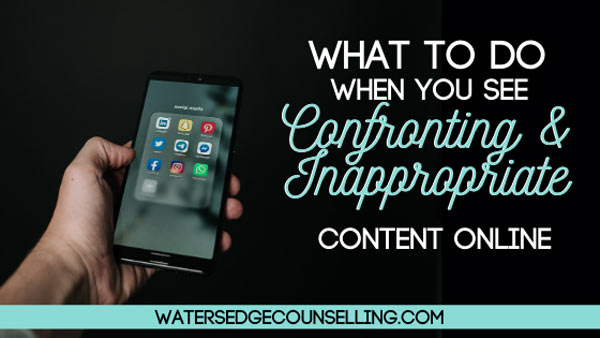
It is very normal to be distressed when content pops up on our social media feeds that are really confronting and inappropriate. We have seen this happen increasingly over the past few years, to the extent where it’s rare for young people to not view viral content (video and images), no matter how distressing it may be.
This is a reminder that you may not always have control over all the things that appear on your screen, but you have the choice with what you do with it.
Your Choices
- You can shut your screen, press the block/report button or close the website down.
- You are allowed to not look at the content.
- You are allowed to delete it.
- You can block people that post certain content or send you content you find triggering.
- And you can delete the apps you find a lot of that content on, for a short while if you need a breather, or permanently.
You are not obligated to post about things, or to write comments, or respond to messages. And you have the power to choose how you respond to what is on your feed.
Talk About It
If you have viewed something online that is disturbing you, you can choose to talk to safe people about what you have seen. Please, talk to a counsellor, a trusted adult, a teacher, a parent or a mentor. We all need the time and space to process the content we see online – it’s vital for our mental health. If you’re that safe person someone talks to about it, listen, and remember they need support, not judgment.
And if you’re not in a good place to discuss it and be that ‘safe person’, that’s ok too, just refer them onto another trusted adult. You can use the conversation as a way of showing how asking for help is a strength, because it absolutely is. And when you support them in seeking further help, it validates the courage they have shown in asking for your support.
What happens when we share disturbing content
If you choose to share posts about triggering content online, a gentle reminder that by sharing names, acts and locations, it can encourage young people to search for that content. It is not that we are silent when abusive content is posted, but we need to choose how we talk about it and what we share.
Remember to be respectful of family members linked with the content, to only share facts that have been proven absolutely true, and to not be explicit about anything, so there are no copycat actions that follow any viral content.
Resources
Chat Safe is a resource I find really useful, that looks at how we can safely talk about suicide with each other. You can visit it here.
Another resource that is really helpful in navigating how we respond to online content is eSafety .There are hands on resources for every age group, that explore all the different aspects of our digital world and the way it impacts us. Check it out here.
You can also call Lifeline at any time on 13 11 14 if you just need to chat.
And lastly, be kind to yourself friends. There is a lot happening and a lot of feelings to be held and processed. Talk to people you trust, and don’t be hard on yourself. We will get through this together.
Have you seen a video or images online that made you feel uncomfortable? Do you need direction and support on how to cope, or to support someone who has come to you for advice? Here’s what you need to do: Contact Colleen on 0434 337 245 or Duncan on 0434 331 243 for a FREE 10 minute consultation on how we can best help you or book online now.
Leave a Reply